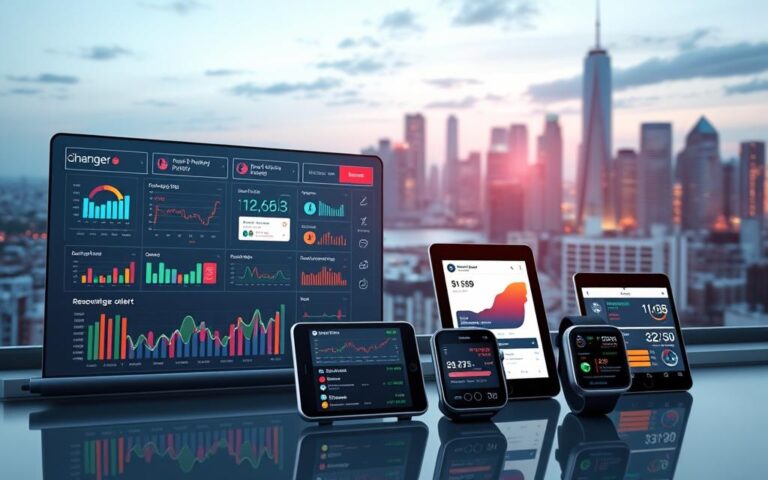Advertisement
More than 80% of major U.S. banks now issue contactless cards. So, chances are you already have one in your wallet without realizing it.
Contactless payment lets you tap, wave, or hold a card or device near a terminal. This small change cuts checkout time. It also removes the hassle of digging for cash or fumbling with receipts.
You get faster lines, fewer pockets stuffed with paper, and the simple mental ease of carrying less. Major networks like Visa, Mastercard, American Express, and Discover all support these wireless payment cards. Most banks now issue them to customers.
Under the hood, NFC and RFID standards enable a secure wireless handshake between your card and the point-of-sale. Throughout this article, you’ll learn how contactless cards work. You’ll also see why they can be safer than older methods and get practical tips for using tap-to-pay cards in everyday life.
What Are Contactless Cards?
Contactless cards have a tiny antenna and secure chip. They let you tap to pay. This uses NFC technology or RFID to exchange data with a terminal.
They are faster than swiping a magnetic stripe or using a chip-and-PIN card. Instead of a static account number, they send a tokenized value or dynamic cryptogram. This makes transactions safer.
Mobile wallets from Apple and Google also use this technology. You can pay with your phone or wearable.
Definition and Functionality
Contactless cards and proximity cards work in a similar way. They use short-range wireless communication for quick payments. NFC technology activates when the card is near a terminal.
RFID cards are used in access control and can be used for payments. But payment-grade cards follow EMV rules and use stronger encryption.
When you tap, the terminal and card check each other. The terminal asks for proof, the card gives a dynamic code, and the issuer authorizes the charge. For bigger purchases or offline exceptions, you might need to insert the card or enter a PIN.
Security Features
Card networks like Visa, Mastercard, and American Express add EMV chip-level protections. They also use transaction-level cryptograms. Tokenization masks your real account number, so merchants and e-receipts never store the full PAN.
Many U.S. issuers have zero-liability policies. These cover unauthorized transactions. You can also add physical and device protections. RFID-blocking wallets limit unintended reads of proximity cards, and mobile wallets require biometrics or passcodes before sending payment credentials.
| Feature | Contactless Cards | Magnetic Stripe |
|---|---|---|
| Read method | NFC technology / RFID communication | Magnetic read |
| Security | Tokenization, dynamic cryptogram, EMV chip | Static data, easier to clone |
| Speed | Tap to pay within seconds | Swipe or insert, slower |
| Device support | Cards, phones, wearables | Cards only |
| Consumer safeguards | Zero-liability, biometric auth on wallets | Issuer dispute processes |
The Benefits of Using Contactless Cards
Using tap-to-pay cards saves you time and makes payments smoother. A contactless payment usually takes less than a second. This is crucial in places like coffee shops, transit gates, and busy checkout lines where time is of the essence.
Commuters benefit a lot when transit systems accept wireless payment cards. You can board trains faster and avoid missing them. Mobile payments also speed up pickup and delivery orders at curbside or counter.
Tap-to-pay cards reduce wear and tear on your card. You don’t need to swipe or insert it repeatedly. This means your magnetic stripes and chip contacts last longer.
Security improvements keep your money safer than older methods.
Magnetic stripe data is static, making it vulnerable to skimming. Contactless cards, on the other hand, generate a unique cryptogram for each transaction. This makes stolen data useless to fraudsters.
Mobile wallets like Apple Pay and Google Wallet add extra security. They use tokenization and biometric checks like Face ID or fingerprint unlock. This means your real card number is replaced with a temporary code, reducing risk if a payment is intercepted.
Card issuers closely monitor activity and flag unusual patterns quickly. Many banks block suspicious contactless activity and enforce zero-liability policies for fraudulent charges. They also set limits on tap amounts to protect your card if it’s lost or stolen.
Using tap-to-pay cards, contactless payment methods, mobile payments, or wireless payment cards offers convenience without sacrificing security. It’s a win-win for everyday life.
| Benefit | How It Helps You | Real-World Example |
|---|---|---|
| Speed | Authorizes in under a second, cuts checkout time | Grab coffee at Starbucks and exit before the line moves |
| Convenience | Works for transit taps, curbside pickup, vending machines | Tap a contactless-enabled MetroCard alternative to board faster |
| Durability | Less physical wear on magstripes and chip contacts | Card lasts longer, fewer replacements from worn magnetic stripes |
| Security | Dynamic cryptograms, tokenization, biometrics reduce fraud | Apple Pay uses tokenized numbers and Face ID for purchases |
| Issuer protections | Fraud detection, spending limits, zero-liability policies | Bank blocks a suspicious transaction and refunds unauthorized charges |
How to Use Your Contactless Card
Modern payment methods make shopping faster and easier. This guide will show you how to use tap-to-pay cards, proximity cards, and mobile payments. Follow these steps to save time at checkout.
Step-by-Step Payment Process
First, look for the contactless symbol on the terminal. This symbol means the reader accepts tap-to-pay cards and mobile wallets.
Next, wake or unlock your card or device if needed. For phones, open Apple Pay, Google Pay, or Samsung Pay. Then, choose the card you want to use.
Now, hold your card or device 1–2 inches from the reader. Keep it steady until you hear a beep or see a green light. This means the payment is confirmed.
If the terminal asks for more, follow the prompts. You might need to enter a PIN or sign. If contactless doesn’t work, insert the chip or swipe the magnetic stripe as a backup.
Common Situations for Usage
Use contactless cards daily at grocery stores, pharmacies, and convenience stores. They also work at quick-service restaurants to speed up checkout.
Transit systems and tolls also accept proximity cards and mobile payments. Tap to pass through gates or pay at a reader when supported.
Vending machines, parking meters, and small merchants with modern point-of-sale terminals often take tap-to-pay cards. Look for the symbol before you try to pay.
When traveling, check if your card works abroad. Also, tell your bank if you’re going out of the country. Some places might ask for tips or have different reader types.
The Growth of Contactless Payments in the U.S.
Contactless payment has become common in the U.S. You see tap-to-pay cards everywhere, from coffee shops to transit systems. Mobile payments like Apple Pay and Google Wallet attract younger people. NFC technology makes these transactions fast and reliable.
Statistics on Consumer Adoption
Adoption soared since the late 2010s, with a big jump during the COVID-19 pandemic. People wanted to avoid touching surfaces. Now, most new debit and credit cards are contactless.
Tap-to-pay card use has grown every year, showing more people are using them. Mobile payments have also increased. Apple Pay and Google Wallet users, mostly under 35, prefer quick app-based checkout.
Influencing Factors in Popularity
Hygiene concerns during the pandemic made tap-to-pay cards and mobile payments more appealing. Businesses updated their systems to accept these methods.
Card networks and banks encouraged the use of contactless payments. They offered rewards to both retailers and cardholders. This made people feel safer using NFC technology.
Convenience and speed are still big reasons for using contactless payments. Marketing efforts and better payment systems have helped. Now, you can use contactless payments in more places, and this trend is expected to keep growing.
Security Concerns with Contactless Cards
Contactless payment makes buying things easy and quick. But, you should think about the security risks. This guide will cover the main dangers and how to keep your accounts safe.
Potential Risks to Consider
RFID skimming is a concern, where thieves might scan cards in crowded areas. But, modern cards are encrypted and have a short range, making this risk low.
Lost or stolen cards are another risk. If someone finds your card, they might make small purchases before your bank blocks it. But, quick reporting and issuer limits can help.
Relay attacks are more complex. They can trick a card into thinking it’s near a reader, making a fake transaction. While rare, they’re a possibility.
Social engineering and phishing are big threats. Scammers try to get you to share your account details or approve fake transactions. Always be cautious of unexpected requests.
How to Stay Safe While Using Them
Use your bank’s mobile app to watch your transactions and get instant alerts. These alerts help you catch suspicious charges early and prevent big losses.
Set low contactless limits if your issuer lets you. Lower limits mean less fraud risk and less profit for thieves if your card is lost.
Think about using an RFID-blocking wallet or sleeve in crowded places. It adds a simple layer of protection.
Register your card with your issuer and use freeze or lock features. Report lost or stolen cards right away. Quick action limits the time a thief can use your card.
Choose mobile wallets like Apple Pay or Google Wallet when you can. They add extra security with biometric checks and tokenization, making your phone payments safer.
Contactless Cards vs. Traditional Payment Methods
The way you pay shapes your daily life. You might use contactless cards, chip-and-PIN, or magnetic stripe cards. Each has its own benefits and drawbacks, affecting your daily activities.
Pros and Cons of Each Method
Contactless and tap-to-pay cards are fast. Just tap and go. This makes lines shorter and your card last longer than swiping.
Wireless payment cards are even quicker. They link to Apple Pay and Google Wallet for super-fast checkout.
Chip-and-PIN offers strong fraud protection and is widely accepted. You insert the card, wait, then enter a PIN. It’s slower but more secure.
Magnetic stripe cards still work at older terminals. But, they’re not secure because data can be easily copied.
Tap-to-pay cards have limits on how much you can spend. Some terminals won’t accept them for big purchases. Wireless payment cards are rare targets for hackers, but compatibility issues can slow you down.
Why You Might Prefer Contactless
Go for contactless when you’re in a hurry. It’s perfect for quick coffee, transit, and shopping. It also makes your card last longer.
Contactless is secure, thanks to tokenization. This keeps your real account number safe. It’s a good choice for those who value convenience and security.
Still, keep chip-and-PIN or magnetic stripe for travel. Some places or older merchants might need these. Having options ensures you can pay everywhere.
Integrating Contactless Cards into Your Budget
Contactless cards and mobile payments are easy to manage in your budget. Just set a few simple rules and let apps handle the rest. This makes it easy to keep track and avoid unexpected charges.
Tracking Spending Made Easy
Use tools like Mint, YNAB, or your bank’s app to track your spending. They automatically categorize tap-to-pay cards. This makes it easy to see where your money is going.
Turn on real-time notifications to catch purchases as they happen. This way, you can spot any errors or fraud right away. You can also match transactions to receipts quickly, saving time on monthly reviews.
Tips for Responsible Usage
Make personal rules for your spending. Set limits for daily or weekly purchases. Use one card for everyday needs and another for bills and subscriptions. This helps avoid overspending.
Use your bank’s app to control your spending. Set limits, get alerts, or freeze your card when needed. This keeps your spending in check and helps protect against fraud.
Keep a list of recurring charges. This way, you know who has your card on file. Reconcile your statements regularly to catch any unexpected charges or subscriptions.
| Action | Tool | Why It Helps |
|---|---|---|
| Auto-categorize transactions | Mint, YNAB, bank apps | Saves time and improves accuracy in tracking spending |
| Enable push notifications | Issuer mobile app, Apple Wallet, Google Wallet | Immediate visibility for tap-to-pay cards and mobile payments |
| Set spending limits | Bank controls, card settings | Prevents overspending and helps enforce personal budgets |
| Designate cards by use | Physical and proximity cards | Separates daily purchases from bills and subscriptions |
| Weekly reconciliation | Bank statement, budgeting app | Catches errors and unauthorized charges early |
Future of Contactless Payments
How you tap and pay will change fast. Soon, making a payment will feel as personal as unlocking your phone. This is thanks to new biometric checks and NFC technology.
Wearables, cars, and smart homes will let you buy things without a wallet. Mobile payments will grow to include rings, watches, and earbuds. You’ll have the choice between digital wallets and wireless payment cards.
Travel and transit will get smoother. You’ll get virtual cards for trips instantly. Your contactless cards will work in more places, thanks to secure token systems.
Innovations on the Horizon
Biometric checks at terminals will make payments faster and safer. Tokenization will help banks and merchants share temporary credentials better. You’ll be able to pay from new devices, thanks to IoT.
Smart wallets will link loyalty programs and coupons to your payments. You might see offers that pop up when you tap, making shopping rewarding.
Expectations for Consumer Experiences
Your checkout will get faster and more personal. Merchants will offer personalized deals without sharing your data. NFC technology will make these interactions smooth.
You’ll control your cards from apps. Freezing cards, checking spending, and switching payment methods will be easy. As more merchants adopt contactless payments, cards and digital wallets will become the standard.
Contactless Cards and Small Businesses
Using contactless cards can make your shop run smoother during busy times. Faster payments mean shorter lines at cafes, restaurants, and stores. This lets you serve more people and increase sales.
How Merchants Benefit from Accepting Them
Less cash handling means fewer thefts and counting mistakes. Your team can focus more on helping customers. Also, modern systems protect against fraud, saving you money.
Platforms like Square, Clover, and Toast make it easy to accept contactless payments. They also help with accounting and loyalty programs, boosting customer loyalty.
Adding wireless payment cards and NFC technology prepares your business for the future. It makes checkouts easier for customers, meeting their changing needs.
Encouraging Customer Adoption
Show clear signs of contactless payment options. Use decals and stickers near payment areas and windows. Train staff to encourage customers to use tap-to-pay cards.
Offer small discounts or loyalty points for tap-to-pay card users during promotions. Send emails or messages about the benefits of contactless payments.
Make sure payment terminals are easy to reach and staff can assist with mobile payments. Work with local banks or payment networks for marketing help to spread the word about contactless payments in your area.
Tips for Maximizing Your Contactless Card Experience
Using contactless cards and tap-to-pay cards can make your life easier. Choose one card or a mobile wallet for everyday purchases. This makes tracking easier and helps you earn rewards more often.
Always have a backup chip card or cash for places that don’t accept contactless payments. This way, you’re prepared for any situation.
Turn on instant transaction alerts and use biometric authentication on your phone. Update your device and wallet apps often. Also, set a strong passcode or fingerprint lock. These steps help protect your mobile payments and catch fraud quickly.
If a terminal won’t accept your tap, try holding your card or device closer. Make sure it’s steady. If that doesn’t work, flip the card to align the antenna. If all else fails, insert the chip or swipe if you can.
If you get declined, check if your card is active, if you’ve hit your daily limit, and if you have enough funds. Also, make sure the merchant terminal is working. Sometimes, just rebooting your device or re-adding the card to your wallet solves the problem.
If you see unauthorized charges, freeze your card in your issuer’s app right away. Then, contact the fraud team with all the details. Keeping these records ready helps resolve disputes quickly. By following these tips, you can enjoy the benefits of contactless cards and stay safe while shopping.



